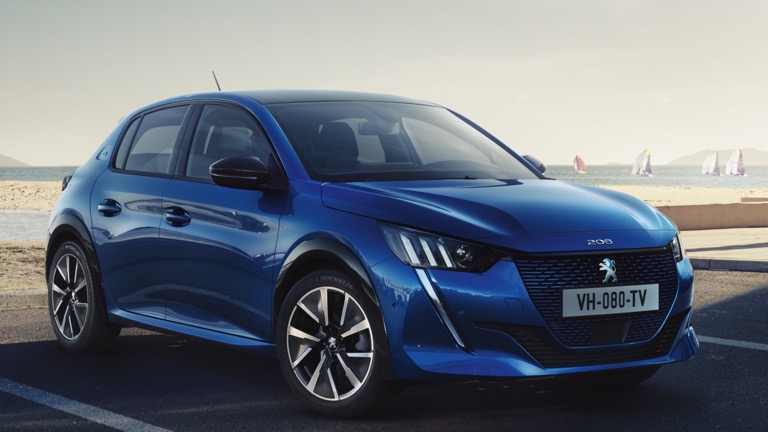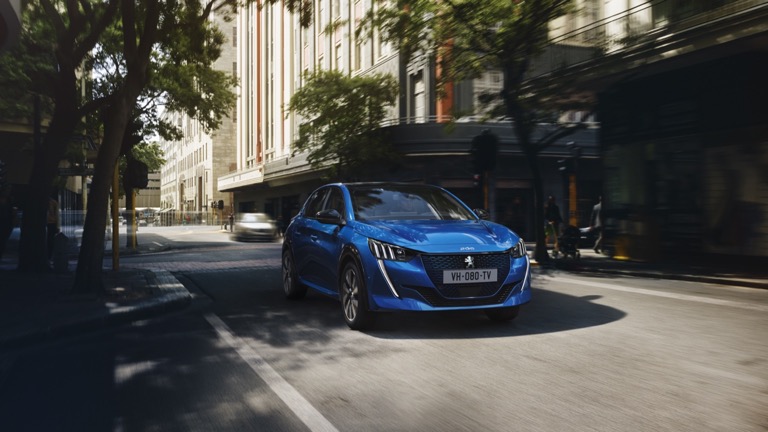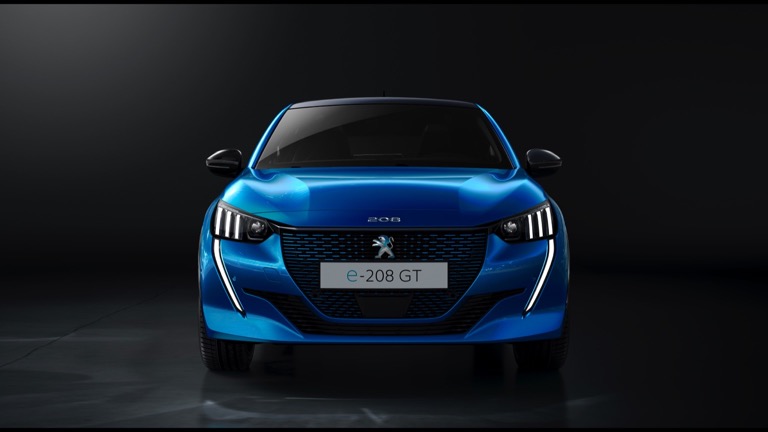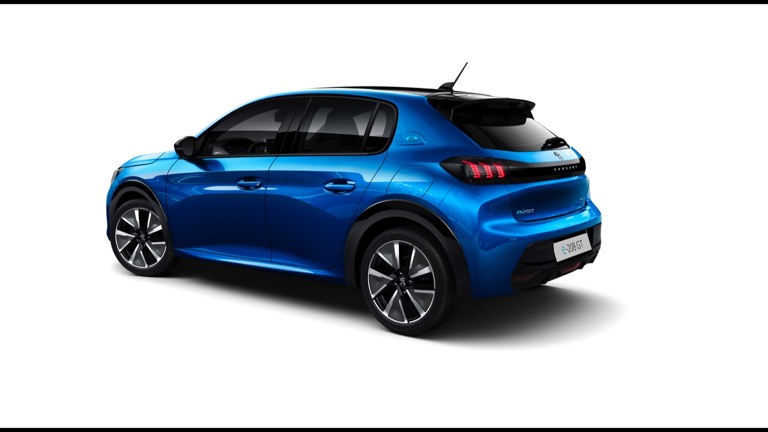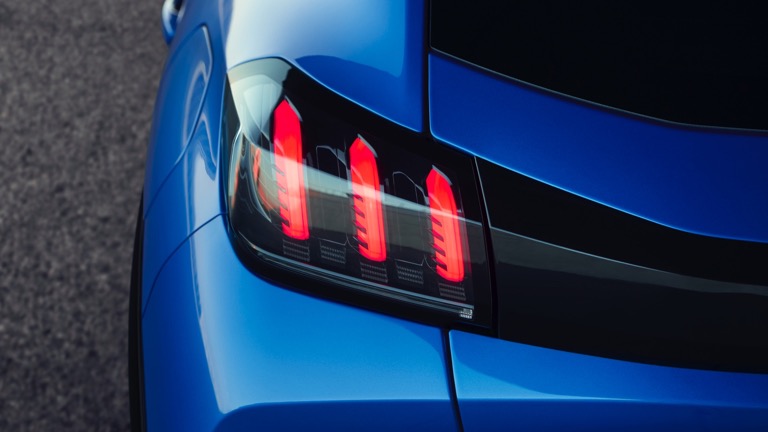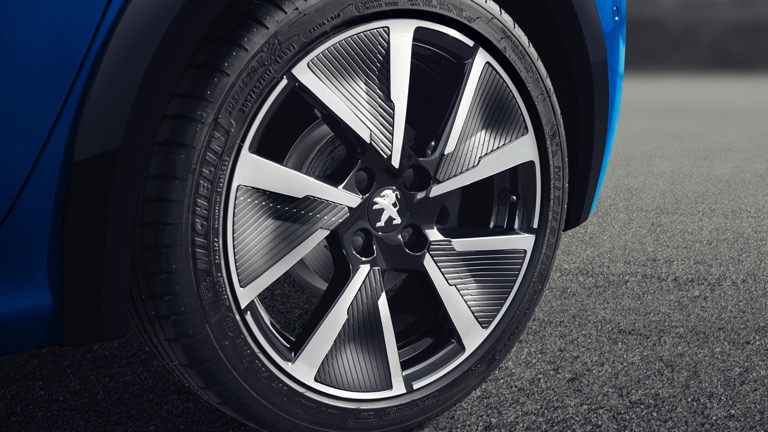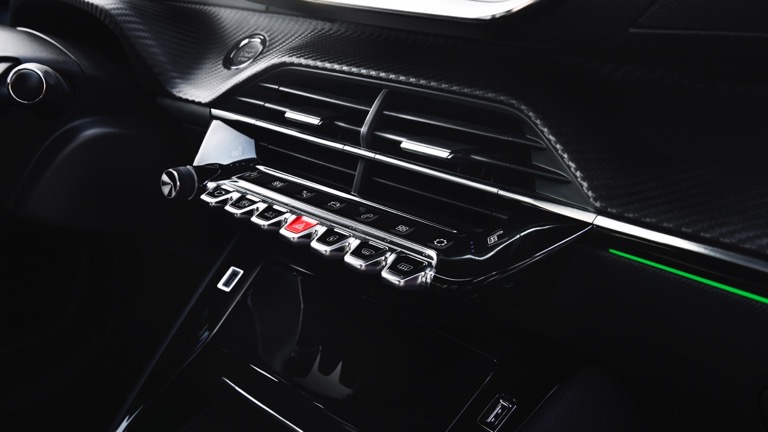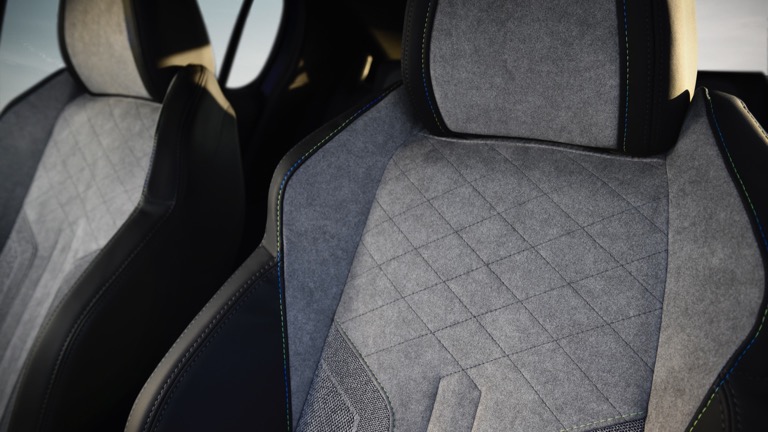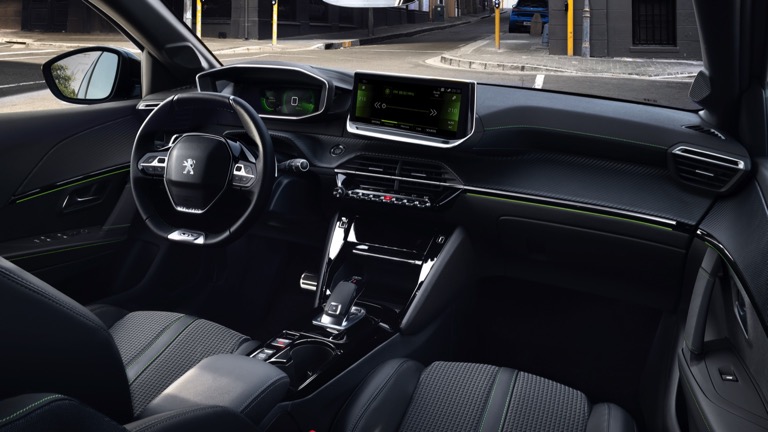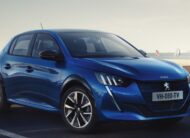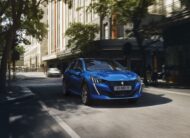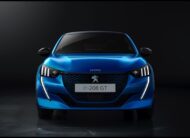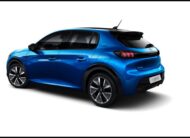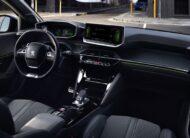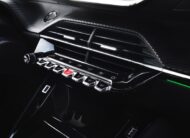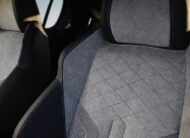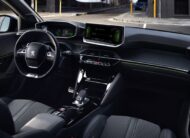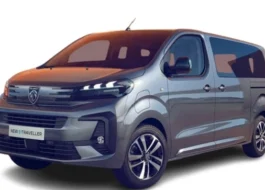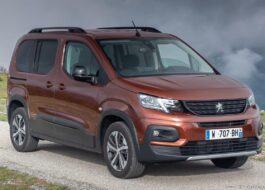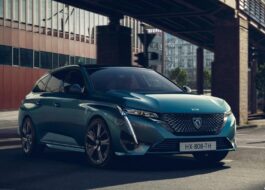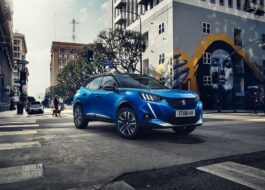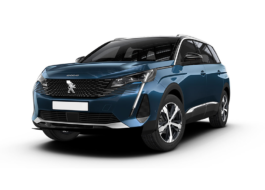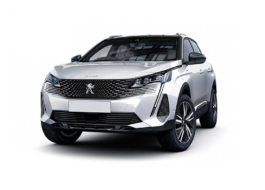Peugeot e-208
If you’re looking to make the switch into a small electric car, the Peugeot e-208 could be a great place to start. It has a decent range, cool looks and is more practical day-to-day than the likes of the Honda e or Mini Electric.
Real Range Estimationbetween 200 - 425 km
| City - Cold Weather * | 280 km |
| Highway - Cold Weather * | 200 km |
| Combined - Cold Weather * | 240 km |
| City - Mild Weather * | 425 km |
| Highway - Mild Weather * | 260 km |
| Combined - Mild Weather * | 325 km |
Performance
| Acceleration 0 - 100 km/h * | 8.1 sec |
| Top Speed | 150 km/h |
| Electric Range * | 285 km |
| Total Power | 100 kW (136 PS) |
| Total Torque | 260 Nm |
| Drive | Front |
Battery
| Nominal Capacity | 50.0 kWh |
| Battery Type | Lithium-ion |
| Number of Cells | 216 |
| Architecture | 400 V |
| Useable Capacity | 46.3 kWh |
| Cathode Material | No Data |
| Pack Configuration | 108s2p |
| Nominal Voltage | 400 V |
Charging
Home / Destination
| Charge Port | Type 2 |
| Port Location | Left Side - Rear |
| Charge Power | 7.4 kW AC |
| Charge Time (0->285 km) | 7h30m |
| Charge Speed | 39 km/h |
Fast Charging
| Fastcharge Port | CCS |
| FC Port Location | Left Side - Rear |
| Fastcharge Power (max) | 101 kW DC |
| Fastcharge Time (29->228 km) | 26 min |
| Fastcharge Speed | 460 km/h |
Bidirectional Charging (V2X)
Vehicle-to-Load (V2L)
| V2L Capability | Not Available |
| Max. Output Power | Not Available |
| Exterior Outlet(s) | Not Available |
| Interior Outlet(s) | Not Available |
Vehicle-to-Home (V2H)
| V2H Capability AC | Not Available |
| Max. Output Power | Not Available |
| V2H Capability DC | Not Available |
| Max. Output Power | Not Available |
Vehicle-to-Grid (V2G)
| V2G Capability AC | Not Available |
| Max. Output Power | Not Available |
| V2G Capability DC | Not Available |
| Max. Output Power | Not Available |
Energy Consumption
EVDB Real Range
| Range * | 285 km |
| Vehicle Consumption * | 162 Wh/km |
| CO2 Emissions | 0 g/km |
| Vehicle Fuel Equivalent * | 1.8 l/100km |
WLTP Ratings (TEL)
| Range | 362 km |
| Rated Consumption | 154 Wh/km |
| Vehicle Consumption | 128 Wh/km |
| CO2 Emissions | 0 g/km |
| Rated Fuel Equivalent | 1.7 l/100km |
| Vehicle Fuel Equivalent | 1.4 l/100km |
WLTP Ratings (TEH)
| Range | 350 km |
| Rated Consumption | 160 Wh/km |
| Vehicle Consumption | 132 Wh/km |
| CO2 Emissions | 0 g/km |
| Rated Fuel Equivalent | 1.8 l/100km |
| Vehicle Fuel Equivalent | 1.5 l/100km |
Rated = official figures as published by manufacturer. Rated consumption and fuel equivalency figures include charging losses.
Vehicle = calculated battery energy consumption used by the vehicle for propulsion and on-board systems.
Real Energy Consumption Estimationbetween 109 - 232 Wh/km
| City - Cold Weather * | 165 Wh/km |
| Highway - Cold Weather * | 232 Wh/km |
| Combined - Cold Weather * | 193 Wh/km |
| City - Mild Weather * | 109 Wh/km |
| Highway - Mild Weather * | 178 Wh/km |
| Combined - Mild Weather * | 142 Wh/km |
Safety (Euro NCAP)
| Safety Rating | |
| Adult Occupant | 91% |
| Child Occupant | 86% |
| Rating Year | 2019 |
| Vulnerable Road Users | 56% |
| Safety Assist | 71% |
Dimensions and Weight
| Length | 4055 mm |
| Width | 1765 mm |
| Width with mirrors | 1960 mm |
| Height | 1430 mm |
| Wheelbase | 2540 mm |
| Weight Unladen (EU) | 1530 kg |
| Gross Vehicle Weight (GVWR) | 1910 kg |
| Max. Payload | 455 kg |
| Cargo Volume | 265 L |
| Cargo Volume Max | 1106 L |
| Cargo Volume Frunk | 0 L |
| Roof Load | 0 kg |
| Tow Hitch Possible | No |
| Towing Weight Unbraked | 0 kg |
| Towing Weight Braked | 0 kg |
| Vertical Load Max | 0 kg |
Miscellaneous
| Seats | 5 people |
| Isofix | Yes, 2 seats |
| Turning Circle | 10.4 m |
| Platform | PSA eCMP |
| EV Dedicated Platform | No |
| Car Body | Hatchback |
| Segment | B - Small |
| Roof Rails | No |
| Heat pump (HP) | Yes |
| HP Standard Equipment | Yes |
The two-tier dashboard design and driver-centric angle of the infotainment unit are identical to the layout you get in the regular 208, but that’s no bad thing. The overall effect is a lot more impressive than you would expect from a small electric hatchback, and most of the materials are of a decent quality, too, aside from some cheaper feeling plastics in the lower half of the cabin.
The rest of the switchgear feels nicely made, although the touch-sensitive infotainment shortcut buttons are a bit fiddly, but you can access most of the commonly used features from the main menu instead.
A 7.0-inch touchscreen infotainment system is offered on the base Active Premium+ and Allure Premium+ trims, it comes standard with Bluetooth connectivity and DAB Radio as well as Apple CarPlay and Android Auto. GT trims get a larger 10.0-inch unit which also includes sat-nav. Both units offer sharp graphics and are easy enough to use, however the smallish buttons can be hard to press while on the move.
The Peugeot’s USP is its cool 3D digital dials. You get it from the Allure Premium+ trim as standard, and it projects information on three different layers to create a 3D effect that helps it literally and figuratively stand out from the displays found in other cars of this size and price. The display is customisable and offers up additional information on the state of charge and range in the e-208.
Electric range, charging and tax
You get one power choice here, so the choice is made for you. It’s a good one though, producing 134bhp and sending it to the front tyres through a single-speed transmission. It’s one of the quicker small electric cars around, completing the 0-60mph sprint in 8.1 seconds, slightly behind the Mini Electric (7.3 seconds) but it outpaces the Renault Zoe (9.5 seconds) and is a shade quicker than the Honda e.
Its 50kWh battery pack promises 225 miles between charges, which is more than most alternatives excepting the over-achieving Renault Zoe which manages 238 miles. It’s pretty efficient too, managing a decent 3.9 miles/kWh versus the 3.5 miles/kWh the Renault Zoe and Honda e can manage.
However, in our own tests, completing mostly motorway miles, we saw just 161 miles from the e-208. That's 74% of its capacity, which is well down on other cars in the same test, such as the Honda e and Renault Zoe, which went more than 90% of their claimed range. (The MINI Electric went beyond its official figures!)
Charging times from 0-100% can take as long as 24 hours if you use a standard three-pin plug, however, a 7.4kW wallbox will do the same job in just seven and a half hours. A public fast charger will get you from 0-80% in just half an hour. The ability to charge at 100kW is a bonus for the e-208, as the Renault Zoe and Mini Electric are both limited to a maximum charge speed of 50kW.
The Peugeot e-208 has no road tax cost and the company car Benefit-in-Kind (BIK) tax rate is low. You are also exempt from congestion charge fees in low emissions zones.
Safety and security
The Peugeot 208 went through Euro NCAP testing in 2019, scoring four out of five stars overall. Despite missing out on all five stars, it scored an impressive 91% for adult occupant safety and 86% for child occupant safety. The low 56% score for protecting vulnerable road users was what let it down.
All Peugeot e-208 models come standard with rear parking sensors, lane keep assist, driver attention warning, active brake assist and cruise control.
Adaptive cruise control and lane position assist are available on the top GT Premium trim and optional on all but the base Active Premium+ model. You also get a reversing camera on the Allure Premium+ trim and front and rear parking sensors on the top GT trims.
Reliability and problems
Peugeot has fared well as a company in recent customer satisfaction surveys, with the regular 208 achieving mod-field results overall. The e-208 is relatively new to the market so there hasn’t been enough time to build up a picture of its long-term reliability, but in general, electric cars tend to have fewer issues than their more mechanically complicated petrol and diesel stablemates.
Peugeot offers its standard three-year/60,000-mile warranty for the e-208, with the battery pack covered by a separate eight-year/100,000-mile warranty. All pretty standard fare, as is the option to extend the standard warranty by a few more years as long as the vehicle is under 10 years old and has covered under 100,000-miles.
